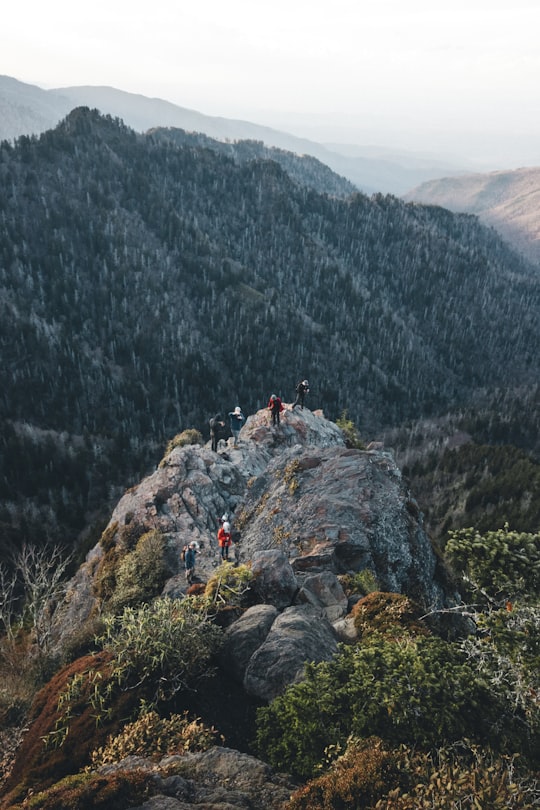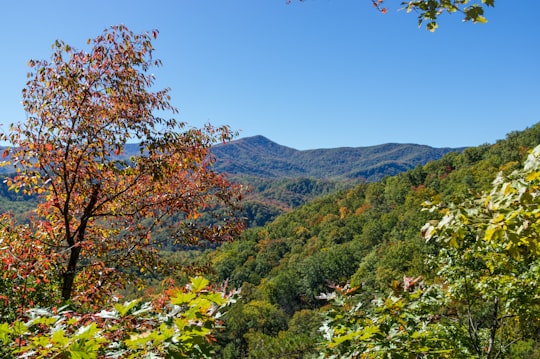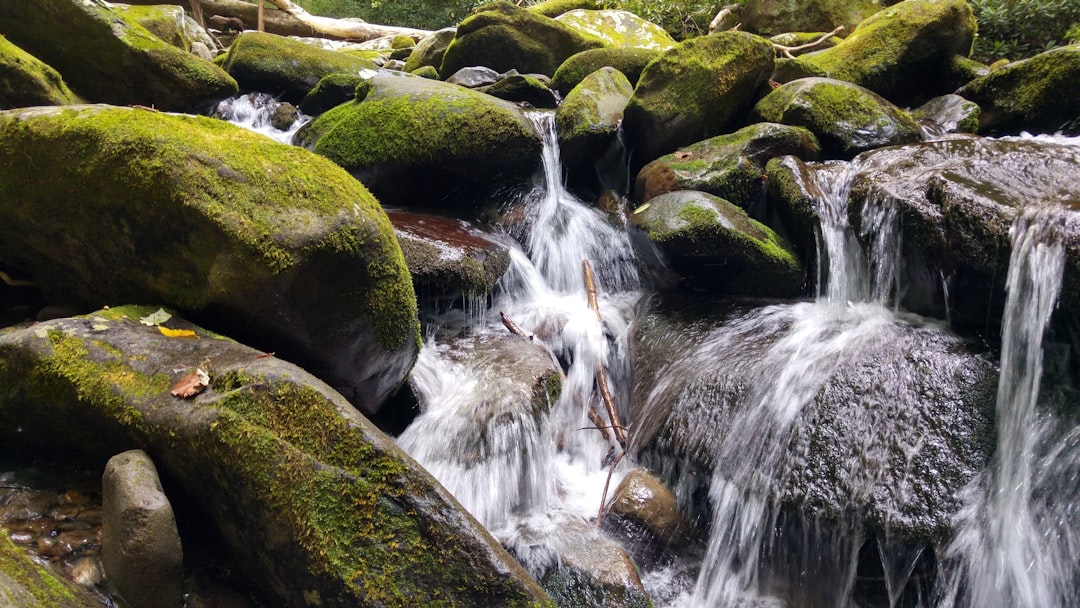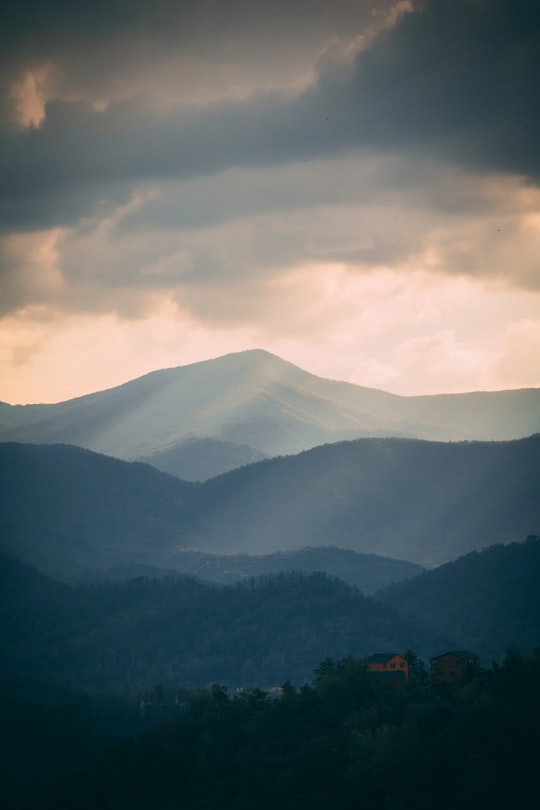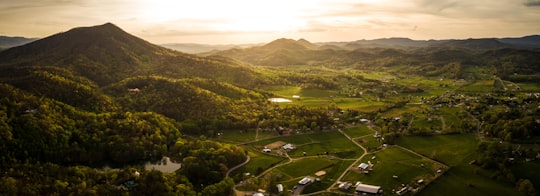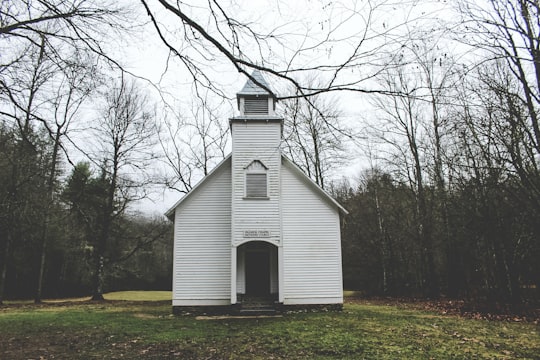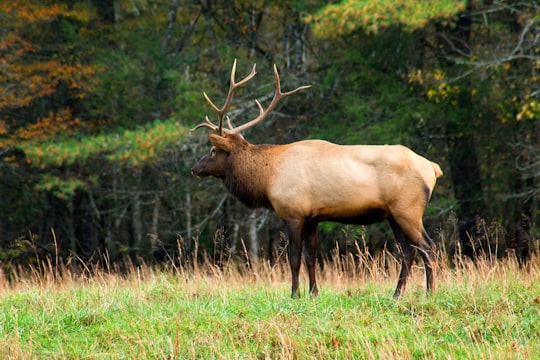Travel Guide of Great Smoky Mountains in United States by Influencers and Travelers
The Great Smoky Mountains are a mountain range rising along the Tennessee–North Carolina border in the southeastern United States. They are a subrange of the Appalachian Mountains, and form part of the Blue Ridge Physiographic Province. The range is sometimes called the Smoky Mountains and the name is commonly shortened to the Smokies. The Great Smokies are best known as the home of the Great Smoky Mountains National Park, which protects most of the range.
Pictures and Stories of Great Smoky Mountains from Influencers
11 pictures of Great Smoky Mountains from Jake Blucker, Mark Olsen, Rachel Davis and other travelers

- Road in Great Smoky Mountains ...click to read more
- Experienced by @Jake Blucker | ©Unsplash
Plan your trip in Great Smoky Mountains with AI 🤖 🗺
Roadtrips.ai is a AI powered trip planner that you can use to generate a customized trip itinerary for any destination in United States in just one clickJust write your activities preferences, budget and number of days travelling and our artificial intelligence will do the rest for you
👉 Use the AI Trip Planner
How to visit Great Smoky Mountains ?
To get to the Great Smoky Mountains, fly into the nearest airports, either McGhee Tyson Airport (TYS) in Knoxville, Tennessee, or Asheville Regional Airport (AVL) in Asheville, North Carolina. From there, you can rent a car and drive to the park, which is approximately an hour from Knoxville and two hours from Asheville. The entrance to the park is free, making it an affordable destination for all.
Before you embark on your journey, it is advisable to book accommodations and activities in advance, especially during peak season (June to August and October). You can reserve campgrounds inside the park, but for those who prefer hotel stays or cabin rentals, the nearby towns of Gatlinburg, Pigeon Forge, and Cherokee offer plenty of options.
Although entrance to the park is free, some activities may come at a cost. Budget for guided tours, horseback riding, or fishing licenses, depending on your interests. Additionally, consider allocating funds for souvenirs and snacks from the park's visitor centers.
The best things to do in the Great Smoky Mountains include hiking, wildlife spotting, and sightseeing. With over 800 miles of trails, there's something for everyone, from the leisurely stroll to the challenging backcountry trek. Some popular hikes include the Alum Cave Trail, Clingmans Dome, and Abrams Falls. Make sure to visit Cades Cove, an 11-mile loop showcasing historic buildings and offering opportunities to spot white-tailed deer, black bears, and wild turkeys.
For dining options, head to the nearby towns for a variety of restaurants. In Gatlinburg, try the locally-sourced Southern cuisine at The Peddler Steakhouse or indulge in a delicious breakfast at Crockett's Breakfast Camp. In Pigeon Forge, stop by The Old Mill Restaurant for a hearty meal or sample some mouth-watering barbecue at Boss Hogg's BBQ Shack.
When it comes to accommodations, consider staying at the charming LeConte Lodge, the only lodging facility inside the park (accessible only by hiking). Alternatively, check out the Bearskin Lodge on the River in Gatlinburg or the Riverstone Resort & Spa in Pigeon Forge for a more luxurious experience.
Off the beaten path:
For an unusual travel experience, look no further than the synchronized fireflies in Elkmont. This natural phenomenon occurs for about two weeks in late May or early June when thousands of fireflies light up the night sky in a mesmerizing display. To attend this event, you must enter the annual lottery for parking passes, as space is limited to reduce overcrowding and protect the fireflies' habitat. Witnessing this exceptional spectacle in the heart of the Great Smoky Mountains is an unforgettable experience that should not be missed.
Book your Travel Experience at Great Smoky Mountains
Discover the best tours and activities around Great Smoky Mountains, United States and book your travel experience today with our booking partners
Map of Great Smoky Mountains
View Great Smoky Mountains on a map with the the closest popular places nearby
More Travel spots to explore around Great Smoky Mountains
Click on the pictures to learn more about the places and to get directions
Discover more travel spots to explore around Great Smoky Mountains
🌲 Forest spots ⛰️ Hill station spots ⛰️ Hill spots 🌲 Tropical and subtropical coniferous forests spots 🌲 Nature reserve spots ⛰️ Mountain range spots 🌲 Plain spots 🏞️ River spots 🛣️ Road trip spots 🏞️ Stream spots 🏞️ Waterfall spots ⛰️ Highland spots 🌉 Humpback bridge spots Log cabin spots ⛰️ Mountain spotsLearn More about Great Smoky Mountains
Great Smoky Mountains are a mountain range in North Carolina and Tennessee, United States. The Great Smoky Mountains National Park encompasses a portion of the mountains.
The park has 16 peaks over 5905.5 feet (1800 meters) and takes its name from the bluish-grey haze that hides their height. Old-growth forests surround the mountains, while a succession of magnificent peaks and hills seem to stretch as far as the eye can see.
With a temperate climate and varied topography, it is one of the most biologically diverse regions on earth. Over 17,000 species of plants and animals have been recorded in the Smokies, including elk, black bear and deer. You may have the opportunity to cross one of its species on your way. In addition, five different forest types cover the park: pine and oak, northern hardwood, fir and spruce, hardwood river coves, and various Tsuga trees.
The park's most traveled route, the Cades Cove Loop Road winds through the Cades Cove Valley in a nearly 11-mile loop (18 km). Surrounded by mountains, this lush valley is a fantastic wildlife viewing area. Numerous 19th and early 20th century buildings such as barns, churches, and a grist mill are located in the entire valley.
Cool streams and crashing waterfalls dot the Great Smoky landscape. Discover many spectacular waterfalls on easy trails, accessible from well-marked trailheads along park roads. In all, there are 801 miles (1,290 km) of hiking trails in the park, ranging from easy to challenging.
Hiking, bivouacking and horseback riding are the most common activities, but the park also offers the possibility of discovering the daily life of the Cherokee Indians and the European settlers who had settled there.
It is an ideal destination for nature lovers, you will discover impressive mountains, forests covered with waterfalls, and animals of all kinds, and on your way, you will cross buildings that contribute to the charm of the park.
Frequently Asked Questions by Travelers planning a trip to Great Smoky Mountains
You can enjoy the great outdoors by sleeping right inside the park at one of the park's 13 campgrounds, which have space for tents or RVs. Alternatively, the college town of Asheville is a charming home base and offers a range of accommodations.
On the Tennessee side, Gatlinburg offers many dining and lodging options just 0.9 miles (1.5 km) beyond the park's boundaries.
Admission to Great Smoky Mountains National Park is free. This is one of the few national parks where admission is free, so take advantage of it.
To sleep in the park, whether camping or in lodges, you must pay an additional fee to get permission.
There are no particular best seasons to visit the park, it depends on what you prefer. The park is open 365 days a year and the main roads within the park remain open year-round, with closures only in case of bad weather. The park is most popular from July through August and in October. For those looking for snow, January and February are the snowiest months. As the most visited park in the country, the roads can be very busy, but there are many less-traveled roads off the beaten path to avoid the crowds.
Where to Stay near Great Smoky Mountains
Discover the best hotels around Great Smoky Mountains, United States and book your stay today with our booking partner booking.com
Popular destinations near Great Smoky Mountains
Disover the best Instagram Spots around Great Smoky Mountains here





